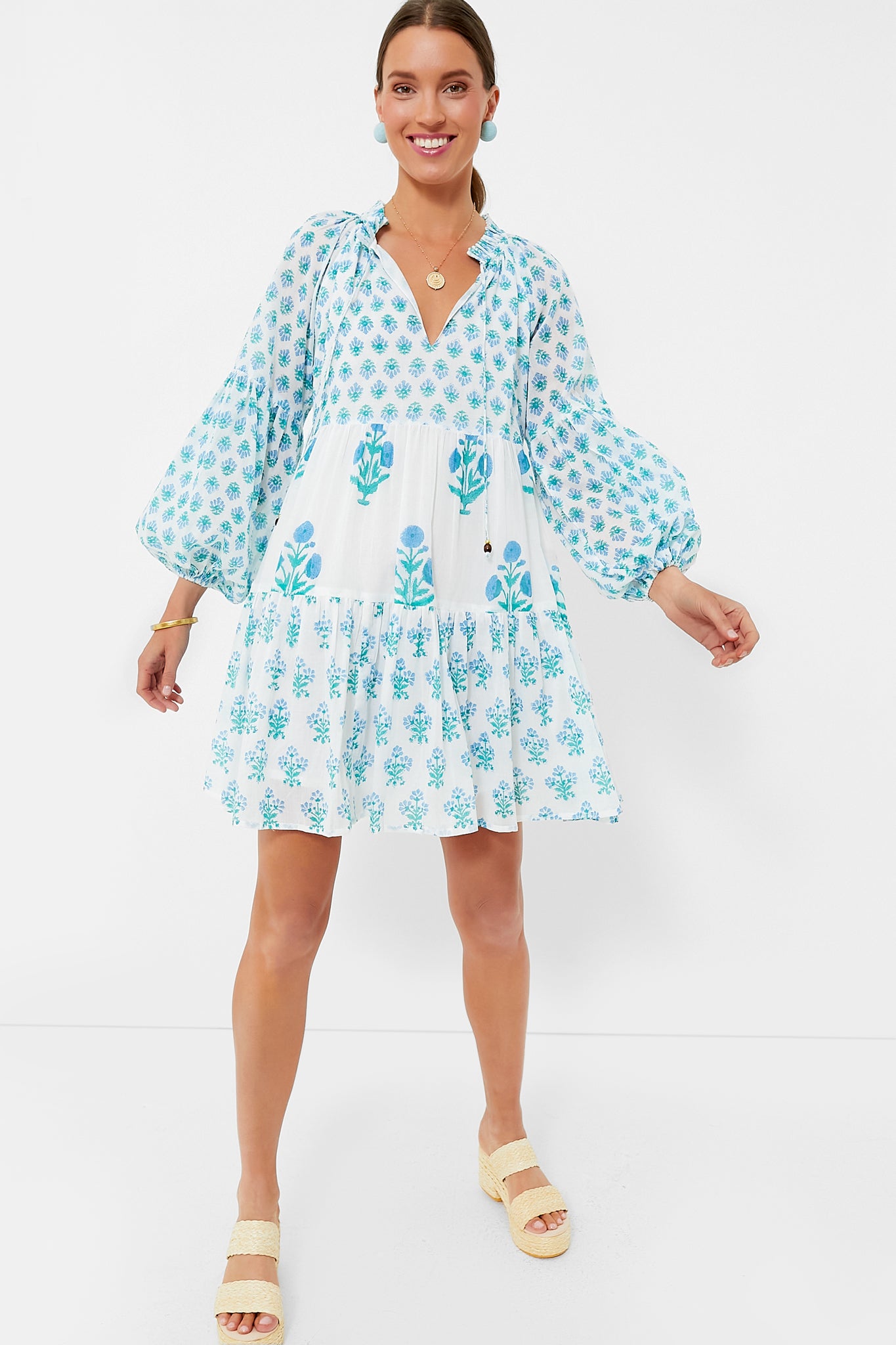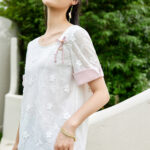5 Ways to Style Your Oliphant Dress for Effortless Chic
The quest for a garment that embodies both artistic flair and wearable comfort often leads to a singular discovery: the Oliphant dress. This isn’t merely a piece of clothing; it’s a canvas for personal expression, a silhouette that whispers of bohemian elegance and modern sophistication. The challenge, and the joy, lies not in acquiring the dress but in unlocking its vast sartorial potential. Many who purchase an Oliphant dress find themselves initially captivated by its unique print or flowy cut, only to later ponder how to integrate it seamlessly into a rotation of more conventional pieces. The secret to achieving that coveted state of “effortless chic” is understanding the dress as a foundational element, a versatile hero in your wardrobe narrative that can be transformed through strategic layering, accessory pairing, and a confident understanding of personal style. This guide will navigate through five distinct avenues to style your Oliphant dress, ensuring it becomes a go-to garment for a multitude of occasions, from casual brunches to elevated evening events.
The Layered Look: Mastering Textures and Proportions
The first and perhaps most transformative approach to styling your Oliphant dress involves the artful application of layers. A dress, by its very definition, is a single entity, but its character can be profoundly altered by what you place over, under, or around it. Consider the fundamental principles of texture and proportion, concepts widely discussed in fashion theory from institutions like the Fashion Institute of Technology. Texture adds visual weight and tactile interest; a chunky, cable-knit sweater thrown over the shoulders of a delicate, silky Oliphant dress creates a compelling contrast between rugged and refined. Similarly, proportion dictates the visual balance of an outfit. A longer, maxi-length Oliphant dress can be paired with a cropped denim or leather jacket to define the waist and break up the vertical line, creating a more dynamic and modern silhouette. This technique is not about hiding the dress but about framing it, using outer layers as a border that highlights the artwork within. For cooler months, layering a thin turtleneck underneath the dress is a classic trick borrowed from Parisian style icons, adding warmth while introducing a new color block that can either complement or boldly contrast with the dress’s pattern. The key is to experiment with pieces you already own—blazers, cardigans, kimonos, even a simple white t-shirt underneath with the dress worn as a pinafore. Each combination tells a different story, moving the dress from a summer-only piece to a year-round wardrobe staple.

Accessorizing with Intent: From Minimalist to Maximalist
If layering defines the structure of your outfit, accessorizing defines its soul. The right accessories can elevate your Oliphant dress from a simple garment to a curated fashion statement. This process requires intent, a conscious decision about the narrative you wish to convey. Let’s explore two opposing yet equally valid philosophies. The minimalist approach, championed by figures like designer Jil Sander, focuses on “quiet luxury.” Here, the intricate pattern of the Oliphant dress is the star. Accessories are kept sparse and refined: a single, delicate gold chain, a slim leather watch, and a pair of understated stud earrings. The goal is to complement, not compete. The footwear would be equally clean—perhaps simple leather sandals or white sneakers for a contemporary twist. Conversely, the maximalist approach, as seen in the vibrant aesthetics of brands like Gucci under Alessandro Michele, encourages a joyful collision of elements. This is where you can pair the dress with stacks of mixed-metal bangles, a wide-brimmed hat adorned with a ribbon, a statement belt that cinches the waist, and bold, colorful earrings. The philosophy here is one of abundance and personal history, where each accessory has a story. As the renowned stylist Rachel Zoe once stated, “Style is a way to say who you are without having to speak.” Whether you choose minimalism or maximalism, your accessories should be an authentic extension of your personality, using the dress as the central canvas upon which you paint your identity.

The Power of Footwear: Grounding Your Ensemble
Footwear is arguably the most critical accessory, as it literally and figuratively grounds your entire look. The choice of shoe can dramatically shift the formality and vibe of your Oliphant dress. This decision should be guided by the occasion and the desired level of comfort and edge. For a day spent exploring a city or a casual weekend outing, pairing the dress with classic white sneakers is a fail-safe option that injects a dose of modern, off-duty model cool. The contrast between the dress’s often romantic silhouette and the utilitarian nature of sneakers creates an interesting tension that is the very essence of effortless chic. For a more polished, office-appropriate look, consider ankle boots. A sleek black leather boot can add structure and sophistication, especially when combined with the layered look of a blazer. As the day transitions to evening, the simplest way to elevate the dress is by introducing a heel. A strappy sandal in a neutral tone elongates the leg and adds a touch of glamour, while a block heel or wedge offers stability and comfort for longer periods of standing. The psychological impact of footwear is well-documented; as noted in research on enclothed cognition, the clothes we wear can affect our psychological processes. The right shoes don’t just complete the outfit; they can elevate your confidence, making you feel more powerful, relaxed, or playful as the situation demands.
Strategic Belting: Defining Your Silhouette
One of the most common characteristics of an Oliphant dress is its often relaxed, sometimes shift-like or A-line silhouette. While this is a source of its comfort, it can sometimes obscure the wearer’s natural shape. This is where the strategic use of a belt becomes a powerful tool. Belting is not just a functional act; it’s a stylistic choice that can completely redefine the dress’s proportions and, by extension, your entire silhouette. The goal is to create a focal point at the narrowest part of your torso, typically the waist, which creates an hourglass shape that is universally flattering. The choice of belt is crucial. A wide, cognac leather belt can inject a rustic, bohemian feel, perfect for a daytime festival look. A thin, metallic chain belt, on the other hand, adds a hint of disco-era glamour and is ideal for evening wear. For a truly modern approach, try belting over a layer. Place a belt over a cardigan or jacket that you’re wearing on top of the dress. This technique not only defines your waist but also integrates the outer layer seamlessly into the outfit, making it look like a single, intentional ensemble rather than separate pieces. This approach to creating shape is a cornerstone of tailoring and personal styling, emphasizing that clothing should adapt to you, not the other way around.

Transitioning from Day to Night: A Seamless Evolution
The ultimate test of a garment’s versatility is its ability to transition gracefully from the demands of a daytime schedule to the allure of an evening event. Your Oliphant dress is uniquely suited for this challenge with a few strategic adjustments. The foundation remains the same—the dress itself—but the elements you add or subtract facilitate the transformation. Begin with your daytime look: the dress paired with flat sandals or sneakers, a crossbody bag for hands-free convenience, and minimal, delicate jewelry. As evening approaches, the metamorphosis begins. Swap the casual shoes for heels or elegant flats. Exchange the crossbody bag for a structured clutch or a miniature bag. This is the moment to introduce your statement jewelry—those bold earrings or a dramatic necklace that were too much for the daylight hours. A quick touch-up of makeup, perhaps darkening the lipstick or adding a smoky eye, completes the shift. The concept of a “capsule wardrobe,” popularized by stylists like Susie Faux, revolves around owning multifunctional pieces that can be dressed up or down. Your Oliphant dress is a prime example of such a piece. This strategy is not only stylish but also practical, allowing you to pack lightly for trips or manage a busy day without needing a full outfit change. It’s about working smarter, not harder, with your wardrobe.

The true beauty of the Oliphant dress lies in its inherent flexibility. It is a garment that invites creativity and refuses to be pigeonholed into a single aesthetic. By embracing these five strategies—thoughtful layering, intentional accessorizing, powerful footwear choices, strategic belting, and mastering the day-to-night transition—you move beyond simply wearing a dress to actively styling a look. This journey is about developing a deeper dialogue with your clothing, understanding how different elements interact to create a cohesive whole that reflects your unique identity. The Oliphant dress is not a passing trend but a timeless piece waiting for your personal touch. So, open your wardrobe, experiment with confidence, and discover the endless possibilities that await.






